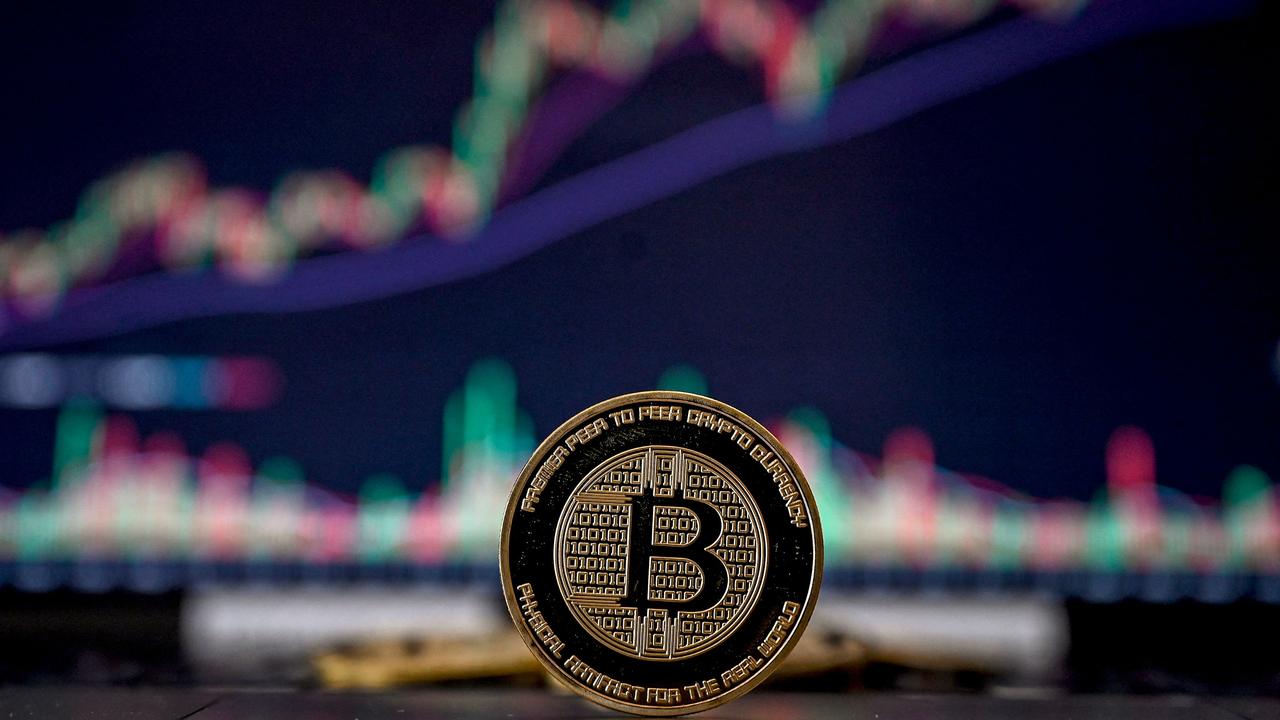Bitcoin could surge to $US250,000 in 2025 under favourable policies from Donald Trump

Pic via Getty Images
The price of Bitcoin could rocket to $US250,000 ($402,000) this year on expectations that the favourable cryptocurrency policies of the incoming Trump administration, including a possible strategic reserve, will cement its status as a mature asset class, analysts say.
Bitcoin soared more than 120 per cent in 2024, including around 50 per cent since Donald Trump’s election win in November, with investors betting that his second term will turbocharge gains after promising to end Joe Biden’s “war on crypto”.
Prices briefly exceeded $US100,000 for the first time last month and were around $US94,550 on Monday. Investors who bought Bitcoin at the beginning of 2023 would be 500 per cent richer today.
Market analysts all predict gains for Bitcoin this year, particularly over the coming months, but differ on the magnitude. VanEck, Standard Chartered, Fundstrat Global Advisors and Bernstein see it potentially reaching anywhere between $US120,000 and $US250,000 due to strong institutional inflows, particularly from spot Bitcoin ETFs.
VanEck analysts said the crypto bull market still had a way to go and would reach its peak in the first quarter at around $US180,000. It then expected a 30 per cent retracement as the market consolidated during the winter before a recovery in the final quarter, with major tokens regaining momentum and reclaiming previous all-time highs by the end of 2025.
Morgan Creek Capital has a more conservative outlook of a peak between $US120,000 and $US150,000 by mid-2025, based on its fair value and increasing adoption.
Markets are betting that Mr Trump’s policies, including a strategic reserve of Bitcoin, will increase mainstream adoption and institutional inflows.
Tim Kravchunovsky, founder and CEO of the decentralised telecommunications network Chirp, said that if the US built a Bitcoin reserve, it would create a FOMO (fear of missing out) effect and push other countries to follow suit. Sovereign wealth funds would be pressured to introduce Bitcoin to their portfolios.
“Bitcoin is going to be in every investment portfolio, on par with other alternative asset classes like gold, and it will happen sooner than people think,” he said. “Already, a number of other countries are interested in building a Bitcoin reserve, and we will see a lot more progress on this in the next few months.
“This will not only create a huge deal of support for the price of Bitcoin, but also add legitimacy to the rest of the crypto ecosystem.”
Betashares head of digital assets Justin Arzadon said while Bitcoin and digital assets had shown more maturity as an asset class in recent years, recent price gains had been driven solely by Mr Trump and his plans.
“The major cryptocurrencies have priced in a lot of expected good news in terms of rate cuts from the Federal Reserve and a more permissive regulatory framework from the incoming Trump administration,” he said.
“Any setback on either front could see a short-term pullback in terms of prices for the asset class despite the long-term outlook for crypto.”
Caroline Bowler, CEO of Australian crypto trading exchange BTC Markets, said macroeconomic conditions around interest rates could be a potential shock factor to markets this year.

“Historically, the sector has mirrored movements in tech stock. During periods of increased liquidity, such as quantitative easing, cryptocurrency has thrived. The contrary is also true,” she said.
“Risks here would be any macroeconomic shock pulling up liquidity around the world, or if interest rates remain high or increase. Both events would trim available capital for crypto investment.”
Ms Bowler said that the incoming Trump administration has aligned itself with the crypto industry, but the future was unpredictable.
“It would be folly for any industry to assume a static position in this regard,” she said.
“Cryptocurrency will need to work harder to capitalise on this momentum, beyond solely the US. It will also need to minimise any risk of becoming politicised or aligned to a point of view.”
Crypto investors have cheered Mr Trump’s pledge to create a strategic national reserve for the government’s Bitcoin holdings – a policy that could boost the price by absorbing supply.
He has also vowed to ease the regulatory burden on the crypto industry and has tapped crypto advocate Paul Atkins to lead the Securities and Exchange Commission, replacing Gary Gensler, who led a crackdown on the digital currencies. During the campaign Mr Trump attended several high-profile Bitcoin events.
The past year saw Bitcoin shift from being a digital currency for crypto enthusiasts to an institutional-grade asset, tradeable as a regulated financial product and taken seriously by investors.
AMP is one of the traditional investment houses that have moved into Bitcoin, offering allocations for superannuation customers. Innovative uses of cryptocurrency as a form of everyday payment were expected to emerge, Crypto.com head of Australia Vakul Talwar said.
“More Australians are increasingly owning cryptocurrency and the development of payment technology using cryptocurrencies will continue to provide greater choice and flexibility to consumers,” he said.
“We’ll also see further collaboration between traditional financial institutions and the digital assets industry in Australia, highlighting the growing role of crypto in the future of finance.”
The country has already seen some banks incorporate digital asset solutions or partner with crypto firms to offer services to their clients, while crypto firms are introducing products and services that were once confined to traditional brokerages.
Ms Bowler told The Australian that the success of Bitcoin and ethereum exchange-traded funds would pave the way for the launch of ETFs for alternative assets like Solana, XRP and other cryptocurrencies.
“Overall, this growth will attract more institutional investment, diversify the market, and expand crypto adoption, creating new opportunities for asset exposure and innovation,” he said.
Bitcoin is a limited asset: only 21 million coins can be “mined”.
About 1.1 million coins are still left to be mined, while it is estimated that four million have been lost.
This article first appeared in The Australian.
Related Topics
SUBSCRIBE
Get the latest breaking news and stocks straight to your inbox.
It's free. Unsubscribe whenever you want.
By proceeding, you confirm you understand that we handle personal information in accordance with our Privacy Policy.








